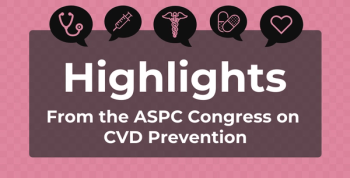
Dual Therapy Appears to Benefit Patients With Pulmonary Fibrosis, Pulmonary Hypertension
The combination of antifibrotic therapy and pulmonary vasodilator therapy improved transplant-free survival but had no significant impact on exercise capacity in pulmonary fibrosis and pulmonary hypertension.
Patients with
Patients with idiopathic pulmonary fibrosis are often prescribed antifibrotic therapies like nintedanib and pirfenidone, which the study authors explained have been found to reduce the rate of functional vital capacity (FVC) compared with placebo in multiple studies.
Still, many patients with interstitial lung diseases like idiopathic PF will go on to develop PH due to the remodeling of pulmonary vasculature, the authors noted. Patients with PH can benefit from pulmonary vasodilators, but there has been relatively little research into the effect of pulmonary vasodilators in patients with PF. One exception was the 2021
In the new study, researchers wanted to look specifically at how the addition of pulmonary vasodilator therapy to antifibrotic therapy would affect patients with IPF and PH. Their hypothesis was that the combination would improve transplant-free survival and possibly functional exercise capacity and lung function.
The retrospective cohort included adults with PF and right-heart catheterization–confirmed PH who sought care at the hospital between 2011 and 2024. A total of 155 patients were identified who had been diagnosed with both conditions. Of those, 131 patients received antifibrotic therapy alone, while 24 patients were treated with both antifibrotic therapy and pulmonary vasodilator therapy. The two cohorts were similar in age and other demographics, though a higher percentage of patients in the dual therapy group were classified as having severe PH (50.0% vs 25.2%).
The investigators used multivariable Cox regression to compare the 2 patient cohorts. They found those who received combination therapy had significantly improved transplant-free survival (25.0% vs 2.3%; P < .001). Transplant-free survival from the time of right-heart catheterization was also significantly longer in the dual therapy group (19.1 months vs 9.4 months; P = .002).
In terms of exercise capacity, there was a trend toward improvement in 6-minute walking distance, though it did not reach statistical significance.
“We demonstrated that among patients in our cohort with pulmonary fibrosis and PF, those treated with combination therapy with antifibrotics and pulmonary vasodilators may have improved transplant-free survival when compared to those treated with antifibrotic therapy alone, despite the combination therapy group having more severe PH at baseline,” the authors wrote.
The findings suggest there may be a pulmonary vascular phenotype among patients with IPF and PH, according to the authors.
They noted that the findings should be interpreted with some caution, since other studies of similar topics have led to inconsistent results. They also noted that most patients in the cohort receiving only antifibrotic therapy underwent lung transplant procedures. The high rate of transplantation in that cohort likely is “a large component of the reduced transplant-free survival among patients not treated with pulmonary vasodilator therapy," they wrote. The patients may have received transplants because they were more fit due to less severe PH, they added.
Further, larger trials will be needed to better clarify the potential benefits of dual therapy, the authors concluded.
References
- Cardillo C, Criner GJ, Gayen S. Antifibrotic therapy combined with pulmonary vasodilator therapy may improve survival in patients with pulmonary fibrosis and pulmonary hypertension: a retrospective cohort study. Ther Adv Respir Dis. 2025;19:17534666251326743. doi:10.1177/17534666251326743
- Waxman A, Restrepo-Jaramillo R, Thenappan T, et al. Inhaled treprostinil in pulmonary hypertension due to interstitial lung disease. N Engl J Med. 2021;384(4):325-334. doi:10.1056/NEJMoa2008470
Newsletter
Stay ahead of policy, cost, and value—subscribe to AJMC for expert insights at the intersection of clinical care and health economics.








































